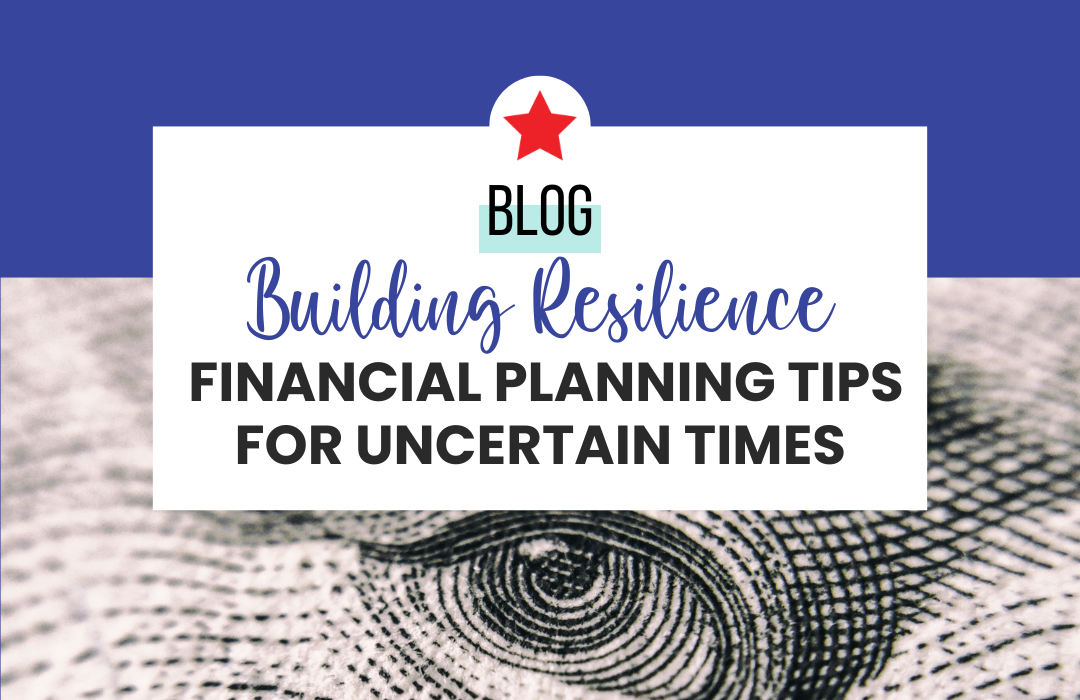[et_pb_section fb_built=”1″ _builder_version=”3.22″ global_colors_info=”{}”][et_pb_row _builder_version=”3.25″ background_size=”initial” background_position=”top_left” background_repeat=”repeat” global_colors_info=”{}”][et_pb_column type=”4_4″ _builder_version=”3.25″ custom_padding=”|||” global_colors_info=”{}” custom_padding__hover=”|||”][et_pb_text _builder_version=”4.13.0″ background_size=”initial” background_position=”top_left” background_repeat=”repeat” hover_enabled=”0″ inline_fonts=”Signature Collection NEW” global_colors_info=”{}” sticky_enabled=”0″]
LOOKING FOR WAYS TO SAVE (OR MAKE) MONEY? HERE’S ONE FOR YOU, AND MORE TO COME!
WAY #1
HOW TO LOWER YOUR CREDIT CARD INTEREST RATE
It’s okay. You can admit that you were sucked in by that 0% introductory interest rate. It happens to the best of us. But what happens when the introductory rate expires, and you’re stuck with a rate that skyrockets to 15, 20, or 25%— or (gulp) even higher?
Credit card interest rates drain you of your hard-earned money. For example, a $20 meal can easily cost $10 to $15 more if left to linger in an outstanding credit card balance. That’s why well-intended people fall behind on their payments and end up barely able to make the minimums each month, even though it can mean taking years to pay off a burrito or cup of coffee.
The reason they’re barely able to cover the minimum payments is because the interest rates are so high. And the interest rates are high because they’re only able to make the minimum payments. It’s a vicious cycle, to say the least.
The Solution
Fortunately, there are ways to lower interest rates and break out of the debt spiral. It’s actually not as difficult as you might think. Breathe easy, because we’re here to spell it out for you.
There are two primary ways to lower your credit card’s interest rate. One is simply to negotiate a lower rate. The other is to transfer your balance to a lower rate card. Let’s walk through each of those.
Negotiating a Lower Rate
Believe it or not, sticking with a card you already have — and negotiating a lower interest rate on that card — is always better than getting a new card with a lower rate. You can’t run from your credit balance, and every time you open a new card, the inquiry into your credit history can ding your credit score, which in turn leads to higher interest rates. There’s that vicious cycle happening again.
Here are a number of negotiating tactics that can help you score a lower rate on your existing card:
- Do your homework. Shop around and see if you can find better deals with competing credit card companies. Use this information as negotiation leverage. After all, the credit card company wants your business, so they’ll often agree to a rate that matches (or at least approaches) one offered by their competitors.
- Start with your oldest card first. Loyalty pays. Companies are more eager to work with long-time customers, and it always helps to be able to say, “I’ve been a loyal member of XYZ bank since…”
- Simply call and ask. There’s probably a customer service number on the back of your credit card. Most people ignore this unless they find themselves in a really sticky situation, but customer service is there for a reason. Arm yourself with competitors’ information, know what you’re asking for, and simply make the call. It can’t hurt to ask, right? It seems too simple however, and that’s why so few people actually take the initiative to do it.
- Be persistent. If at first you don’t succeed, bother them until you do. Okay, don’t bother them — your goal is to be rational and pleasant. But persistence is key. If you’re told “no,” ask if you can speak with a manager. Keep trying until you are connected with a representative who is willing to work with you. This doesn’t mean calling every day, but there’s nothing wrong with scattering several phone calls throughout a few months. By doing so you’ll be on their radar, but hopefully not on their blacklist.
- Be polite. This should go without saying, but customer service representatives are people, too. They listen to complaints all day long, and a genuinely friendly caller actually stands out from the crowd. After all, as the old saying goes, you catch more flies with honey than you do with vinegar.
A Script for You to Use
Try this script for starters: “Hello, my name is _____. I’ve been a customer of _____ bank since ___, and I’m interested in securing a lower interest rate. I have made an effort to make on-time payments, and I funnel ___ dollars per [month/year] through this card. I’ve recently been offered a new credit card with [competing credit card company]. It has a similar structure to yours, but they offer ___% interest rates. I’d like to stay with you based on our history, but the new offer is compelling. Would you be willing to match that offer?
If negotiation doesn’t prove fruitful, opt for Plan B — transferring your balance to a new card.
Transferring your Balance to get a Lower Rate
In some cases, it might not be possible to secure a lower interest rate through negotiation however. For example, perhaps you haven’t exactly been a stellar customer, or maybe your card’s customer service department isn’t willing to play ball. If all else fails, consider balance transfers. This approach can allow you to shift some of your credit card debt to a card with a lower rate (or at least a low introductory rate.)
Additionally, you’ll want to shop around for the best transfer deals. One place to look is https://www.nerdwallet.com/credit-cards?trk=nw_gn_4.0. This website is constantly being updated with the latest and greatest deals and offers. It’s worth putting in some effort upfront because deals vary widely. Keep in mind important considerations such as:
- Balance transfer fees
- Annual fees
- Any other strings attached.
In other words, read that fine print.
For more look at what we offer or to inquire about our services, visit our Contact Page!
– The Spark Team
Additional posts that may interest you
[/et_pb_text][/et_pb_column][/et_pb_row][et_pb_row _builder_version=”4.13.0″ _module_preset=”default” global_colors_info=”{}”][et_pb_column type=”4_4″ _builder_version=”4.13.0″ _module_preset=”default” global_colors_info=”{}”][et_pb_post_slider include_categories=”20″ _builder_version=”4.13.0″ _module_preset=”default” global_colors_info=”{}”][/et_pb_post_slider][/et_pb_column][/et_pb_row][et_pb_row _builder_version=”4.13.0″ _module_preset=”default” global_colors_info=”{}”][et_pb_column type=”4_4″ _builder_version=”4.13.0″ _module_preset=”default” global_colors_info=”{}”][et_pb_post_nav _builder_version=”4.13.0″ _module_preset=”default” global_colors_info=”{}”][/et_pb_post_nav][/et_pb_column][/et_pb_row][et_pb_row column_structure=”1_2,1_2″ _builder_version=”4.13.0″ _module_preset=”default” global_colors_info=”{}”][et_pb_column type=”1_2″ _builder_version=”4.13.0″ _module_preset=”default” global_colors_info=”{}”][et_pb_image src=”https://sparkbusinessconsulting.com/wp-content/uploads/2019/08/PIN-Credit-Card-Savings.png” alt=”Credit Card Savings” title_text=”PIN – Credit Card Savings” _builder_version=”4.13.0″ _module_preset=”default” global_colors_info=”{}”][/et_pb_image][/et_pb_column][et_pb_column type=”1_2″ _builder_version=”4.13.0″ _module_preset=”default” global_colors_info=”{}”][/et_pb_column][/et_pb_row][/et_pb_section]










It is the best time to make a few plans for the future and it is time to be happy. I’ve learn this put up and if I could I want to counsel you some attention-grabbing issues or tips. Perhaps you could write subsequent articles referring to this article. I want to read more things approximately it!
Do you mind if I quote a few of your posts as long as I provide credit and sources back to your webpage? My blog is in the very same niche as yours and my users would genuinely benefit from some of the information you present here. Please let me know if this ok with you. Thank you!
It’s imperative to acknowledge that regardless of their location, each youngster deserves protection and will by no means be subjected to any form of aggression.
BayWin, dijital bahis dunyas?nda un kazanan bir web sitesidir. Musterilerine sundugu bol oyun turleri, basit erisim yollar? ve kaliteli hizmet sunumu ile one c?kmaktad?r.
Bilhassa Baywin giris bilgileri ve guncel erisim bilgileri, Baywin kullan?c?lar?n?n ilgili sorular aras?nda yer bulur.
Baywin’in Temel Ozellikleri
Baywin, dijital bahis platformlar? aras?nda faaliyet gosteren bir markad?r. basketbol bahisleri, sans oyunlar?, sanal yar?slar gibi cesitli oyun turlerine sahiptir.
Bahis sitesinin en onemli dikkat ceken yonu, kazanc oranlar?n? maksimize etmesidir. Ayr?ca, cesitli odeme imkanlar?, kullan?c? memnuniyetini art?r?r.
Baywin Giris Yontemleri
Web: https://jennifer-darmour-h3sk.squarespace.com/electricfoxy?offset=1285162947000&category=Sports+Tech
Baywin markas?n?n engellemelerle kars?lasmas? olagand?r, bununla birlikte engellemeler oldugunda Site yoneticileri cozumler sunmaktad?r.
Adres engeli olustugunda, an?nda bir guncel adres tan?mlan?r. Bu sayede, Baywin’in en yeni erisim adresi uzerinden kullan?c?lar siteye giris yapabilir.
Baywin guncel giris islemleri icin kullan?c?lara birden fazla secenek sunar. Mobil platformlar, tabletler ve PC’ler uzerinden kullan?c?lar hesaplar?na ulasabilir. kullan?c?lar icin erisim konforu sunar.
Ищете взломанными играми на Android? Тогда вы зашли по адресу! Сегодня мы расскажем, как установить игры с модами интересных приложений.
Почему использовать взломанные игры? Причина очевидна: они позволяют получить безлимитные монеты, открыть закрытые функции и многое другое. Такие модификации делают геймплей увлекательнее.
Если вы хотите, где можно найти безопасные взломанные приложения, предлагаем посетить бесплатные моды для популярных игр. Там вы найдете множество модифицированных игр.
Некоторые из самых востребованных игр для модификации: PUBG Mobile, а также множество других. Любая из этих игр может быть скачана с модификациями, что позволяет насладиться бесконечными ресурсами.
Если вы только начинаете, взломанные приложения могут показаться непонятными, но на самом деле всё просто. Как правило, вы загружаете APK-файл и запускаете его на устройстве. Главное: обязательно источник безопасен и проверен.
Тем не менее, стоит учитывать, что использование модов может нарушить условия пользования, в связи с этим действуйте осторожно.
Прямая ссылка на сайт:
Хотите узнать больше о модифицированных играх, пишите нам. Будем рады помочь!